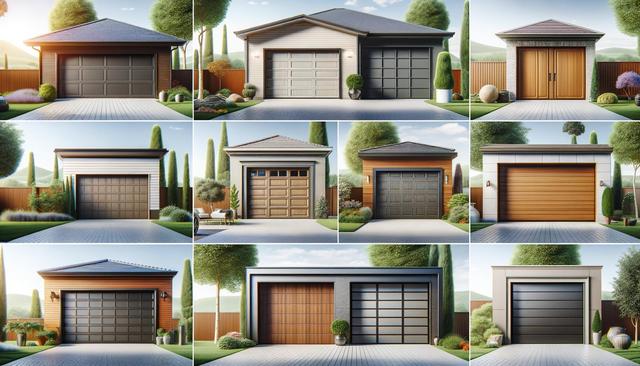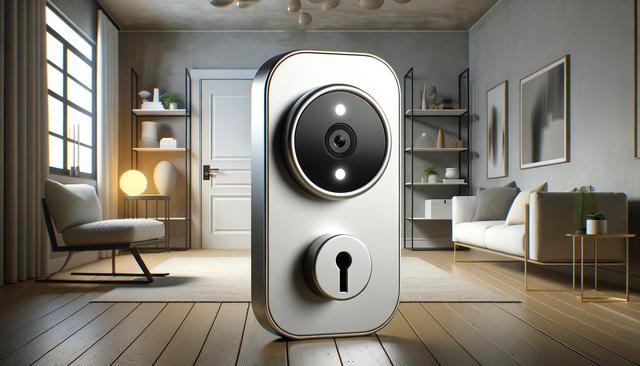Understanding the Purpose and Types of Garage Doors
Garage doors serve as more than just a barrier to protect your vehicles and belongings—they contribute to home security, insulation, and curb appeal. Choosing the right garage door involves understanding the different types available and how each can meet specific needs. Common types include sectional doors, roll-up doors, side-hinged doors, and tilt-up canopy or retractable models. Each type has its own benefits depending on your garage layout, climate, and usage preferences.
For example, sectional garage doors are popular for their space-saving design and smooth operation. Roll-up doors are often used in commercial settings but also suit residential garages with limited ceiling space. Homeowners who appreciate a more traditional look might opt for side-hinged doors, which swing open like regular doors and offer easy pedestrian access. Meanwhile, tilt-up doors can provide a sleek appearance but require more clearance to operate safely.
When selecting a garage door, it’s also important to consider:
- Material durability (steel, aluminum, wood, composite)
- Insulation properties for energy efficiency
- Customization options for windows, finishes, and panel designs
- Integration with smart home systems
Material Choices and Their Advantages
The material of your garage door significantly impacts its performance, maintenance needs, and appearance. Steel doors are known for their strength and low maintenance, making them suitable for various environments. They can also be insulated to improve energy efficiency and noise reduction. Aluminum doors offer a lightweight alternative and resist corrosion, which is ideal for coastal areas.
Wooden garage doors provide a warm, classic look that suits many architectural styles. Though they require regular upkeep to protect against moisture and pests, their aesthetic appeal is unmatched for some homeowners. Composite materials combine the best of both worlds—offering the appearance of wood with the durability of synthetic materials. These doors are resistant to rot, cracking, and warping, making them a practical long-term choice.
Each material comes with specific considerations:
- Steel: Durable, secure, available in many styles
- Aluminum: Lightweight, rust-resistant, modern appearance
- Wood: Customizable, elegant, higher maintenance
- Composite: Low maintenance, wood-like finish, energy-efficient
Safety Features and Technological Enhancements
Modern garage doors go beyond simple open-and-close functions. They now incorporate advanced safety features and smart technologies that enhance convenience and protection. Safety sensors, for instance, detect obstructions and prevent the door from closing on people, pets, or objects. Auto-reverse mechanisms are now standard in most models to reduce the risk of accidents.
Technological advancements in garage door openers have introduced features like:
- Wi-Fi connectivity for remote access via smartphones
- Battery backup systems for power outages
- Integration with home security systems and voice assistants
- Rolling code technology to prevent unauthorized access
It’s advisable to choose a garage door system that includes these safety and tech features, especially for families with children or for homes in high-traffic areas. Routine testing and maintenance of safety sensors and openers can ensure these systems continue to operate reliably over time.
Garage Door Maintenance and Troubleshooting Tips
Proper maintenance extends the lifespan of your garage door and ensures it operates smoothly and safely. Basic upkeep includes checking for wear and tear, lubricating moving parts, and inspecting the door’s balance and alignment. Homeowners should also regularly check for rust on metal components and reapply weatherstripping when necessary.
Here are some tips for keeping your garage door in good condition:
- Lubricate hinges, rollers, and tracks every six months
- Inspect cables and springs for wear or damage
- Test the auto-reverse feature monthly
- Clean the door surface to remove dirt buildup and prevent corrosion
- Tighten loose hardware such as bolts and brackets
If you notice unusual noises, uneven movement, or delayed response from the opener, these could be signs of a mechanical issue. While some maintenance tasks can be done by homeowners, such as tightening bolts or replacing weather seals, more complex issues involving springs or motorized parts should be handled by professionals to avoid injury.
Choosing a Garage Door That Matches Your Home’s Style
Beyond function and safety, a garage door significantly impacts your home’s curb appeal. With a wide range of styles, colors, and finishes available, it’s possible to find a door that complements your home’s exterior design. Whether you prefer a modern, minimalist look or a more traditional, carriage-house style, there are options to suit every preference.
Consider the following when choosing a style:
- Architecture of your home (contemporary, colonial, ranch, etc.)
- Color coordination with siding, trim, and roofing
- Window placement and design for added light and aesthetics
- Decorative hardware for added visual interest
Many manufacturers offer design tools that let you visualize how different garage doors will look on your home. This can be especially helpful when trying to decide between various panel configurations or custom finishes. A well-chosen garage door not only enhances the visual appeal but may also increase the overall value of your property.


